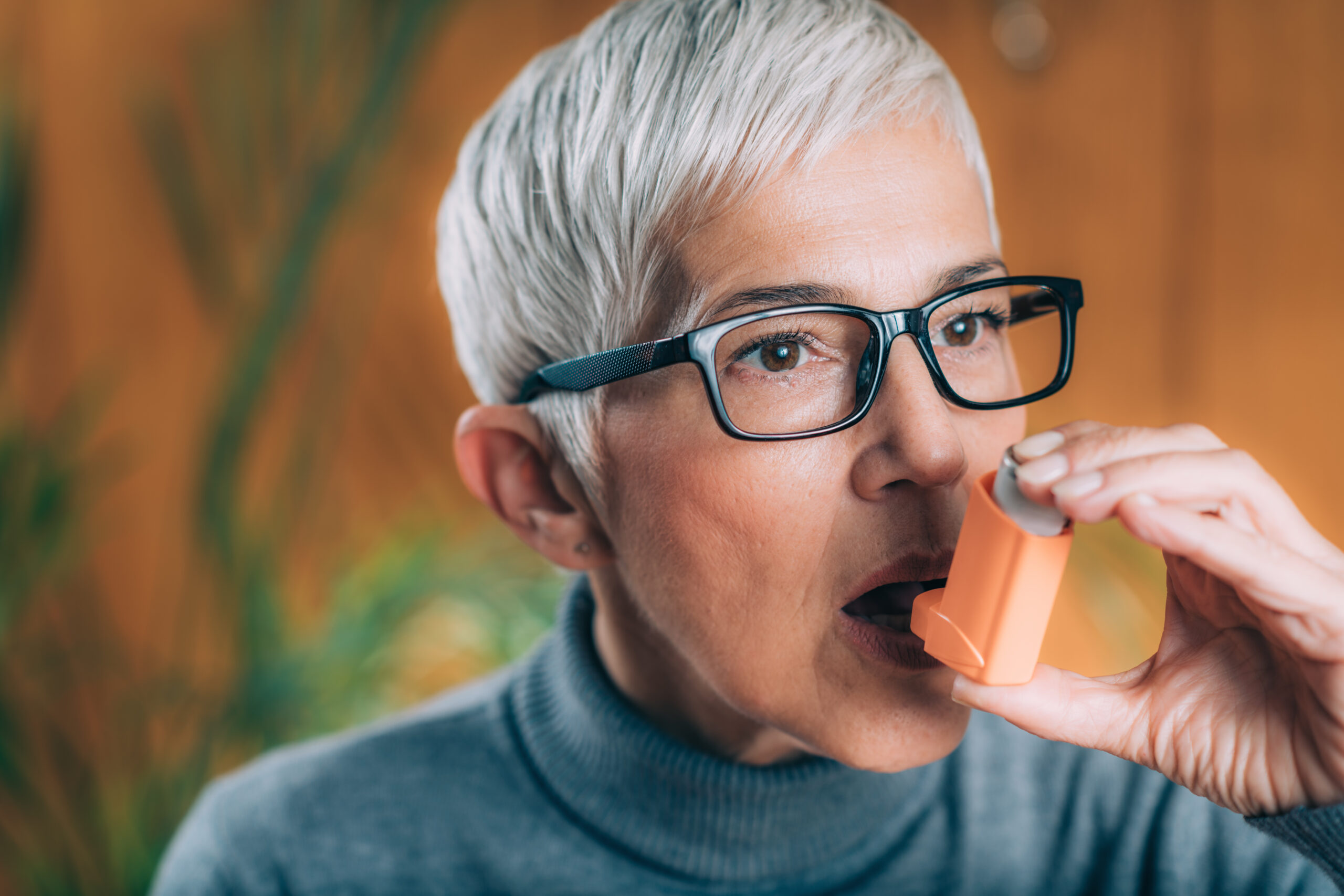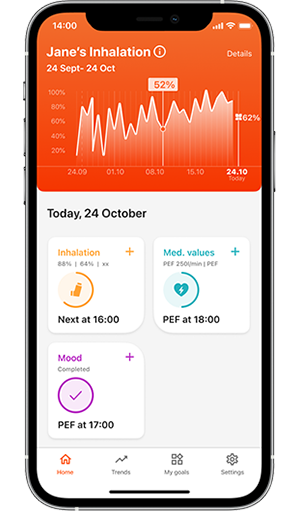
24 Aug COPD: What you should know about this lung disease
What is COPD?
COPD is the abbreviation for chronic obstructive pulmonary disease and is one of the leading causes of death worldwide [1].
The main symptoms of COPD are: Shortness of breath, coughing and sputum
There are two main forms that can be distinguished:
1. COPD with chronic bronchitis: inflammation in the small airways.
2. COPD with emphysema: The partition walls from the alveoli are destroyed, creating air-filled bubbles. This reduces the surface area where gas exchange takes place. CONSEQUENCE: Less oxygen gets into the blood.
In most cases, there is no clear demarcation between one form and the other. The boundaries are fluid. It is even possible to have COPD with chronic bronchitis and emphysema.
What are the causes and risk factors?
The main cause of COPD is smoking. This includes both active smoking and passive smoke inhalation. According to recent studies, this does not only apply to cigarette smoking; smoking THC and shisha can also lead to lung damage [2]. Only 10-20% of those affected have never smoked in their lives.
Other risk factors may include [3]:
– Genetic predispositions (e.g.: alpha1-antitrypsin deficiency).
– Occupational inhalation of dusts (e.g. mining)
– Air pollutants (e.g. sulphur dioxide, dust)
– Respiratory infections in childhood
– Premature birth
Non-medication therapy
Physical activity in everyday life as well as physical training are of high relevance for those affected, regardless of the stage of the disease, as they have a positive influence on the course of the disease. However, the training should be adapted to the individual conditions. No specific type of sport is recommended. Everything depends on the personal motor and mental conditions. Together with the doctor, the best possible recommendation can then be tailored.
One possible form, for example, would be pulmonary exercise, which can be prescribed by doctors [4]. This is a form of exercise therapy that does not improve lung function, but strengthens the overall performance of the muscles, body and cardiovascular system. The exercise sessions are adapted to the disease and its severity.
Another central form of therapy is smoking cessation programmes. Non-smokers have a better prognosis with regard to the further development of symptoms. They suffer less from coughing, can breathe more freely and feel fitter.
Other non-drug therapies include education, rehabilitation programmes and nutritional counselling, as well as preventive vaccinations.
Did you know that there is not only training for your body, but also for your respiratory system?
This involves breathing against resistance, which strengthens the muscles responsible for breathing. This can improve endurance as more air can be inhaled per breath. Not only COPD patients but also athletes use this form of training to improve their performance [5].
Patients with severe COPD and at the same time chronic oxygen deficiency in the blood, are often treated by means of long-term oxygen therapy. The additional oxygen relieves the body and the respiratory muscles can recover with the support.
In particularly severe cases, a lung reduction or even a lung transplant can help [6].
Drug therapy
The symptoms of the disease can be weakened or even disappear completely with medication. The therapy is tailored to the individual patient, using inhalation medication, including so-called bronchodilators. These dilate the bronchial tubes so that less air accumulates in the lungs, which results in improved resilience [7]. It is important that patients know the correct inhalation technique for the medication so that they get the maximum benefit.
This is where the Kata® app comes into play. The inhalation coach supports sufferers in inhalation therapy by describing the individual steps of the inhalation process in a simple way. For this purpose, the signals from the smartphone’s camera and microphone are used and the individual steps of the inhalation manoeuvre are analysed and evaluated by combining augmented reality and artificial intelligence. After an inhalation manoeuvre, patients receive detailed feedback in text and image, which includes an individual evaluation of each inhalation step and, if necessary, recommendations for action for the coming inhalations. At the end of the procedure, Kata® shows which of the steps were performed correctly.

We have aroused your interest and you would like to test Kata®? Then register via our contact form and request a free app test account.
PS: Kata® is of course developed according to the latest standards and in compliance with all data protection and cyber security aspects.
Author: Julia Dier
Sources:
[1] RKI – Gesundheit A-Z – Chronisch Obstruktive Lungenerkrankung (COPD). Zugriff am 09.08.2023. Verfügbar unter https://www.rki.de/DE/Content/GesundAZ/C/COPD/Chronisch_Obstruktive_Lungenerkrankung_inhalt.html
[2] SE SK. COPD: Ursachen, Symptome & Diagnostik. Zugriff am 09.08.2023. Verfügbar unter https://www.schoen-klinik.de/copd
[3] Helmholtz Munich. Zugriff am 09.08.2023. Verfügbar unter https://www.lungeninformationsdienst.de/krankheiten/copd/risikofaktoren
[4] Lungensport – Helmholtz Munich. Zugriff am 09.08.2023. Verfügbar unter https://www.lungeninformationsdienst.de/leben-mit-der-krankheit/lungensport
[5] Sind gezielte Übungen zur Kräftigung der Atemmuskulatur für Menschen mit chronisch obstruktiver Lungenerkrankung wirksam? doi:10.1002/14651858.CD013778.pub2
[6] Nationale VersorgungsLeitlinie COPD (2021). Leitlinien.de. Zugriff am 10.08.2023. Verfügbar unter https://www.leitlinien.de/themen/copd
[7] COPD-Therapie: Wie wird COPD behandelt? – Helmholtz Munich. Zugriff am 10.08.2023. Verfügbar unter https://www.lungeninformationsdienst.de/krankheiten/copd/therapien
